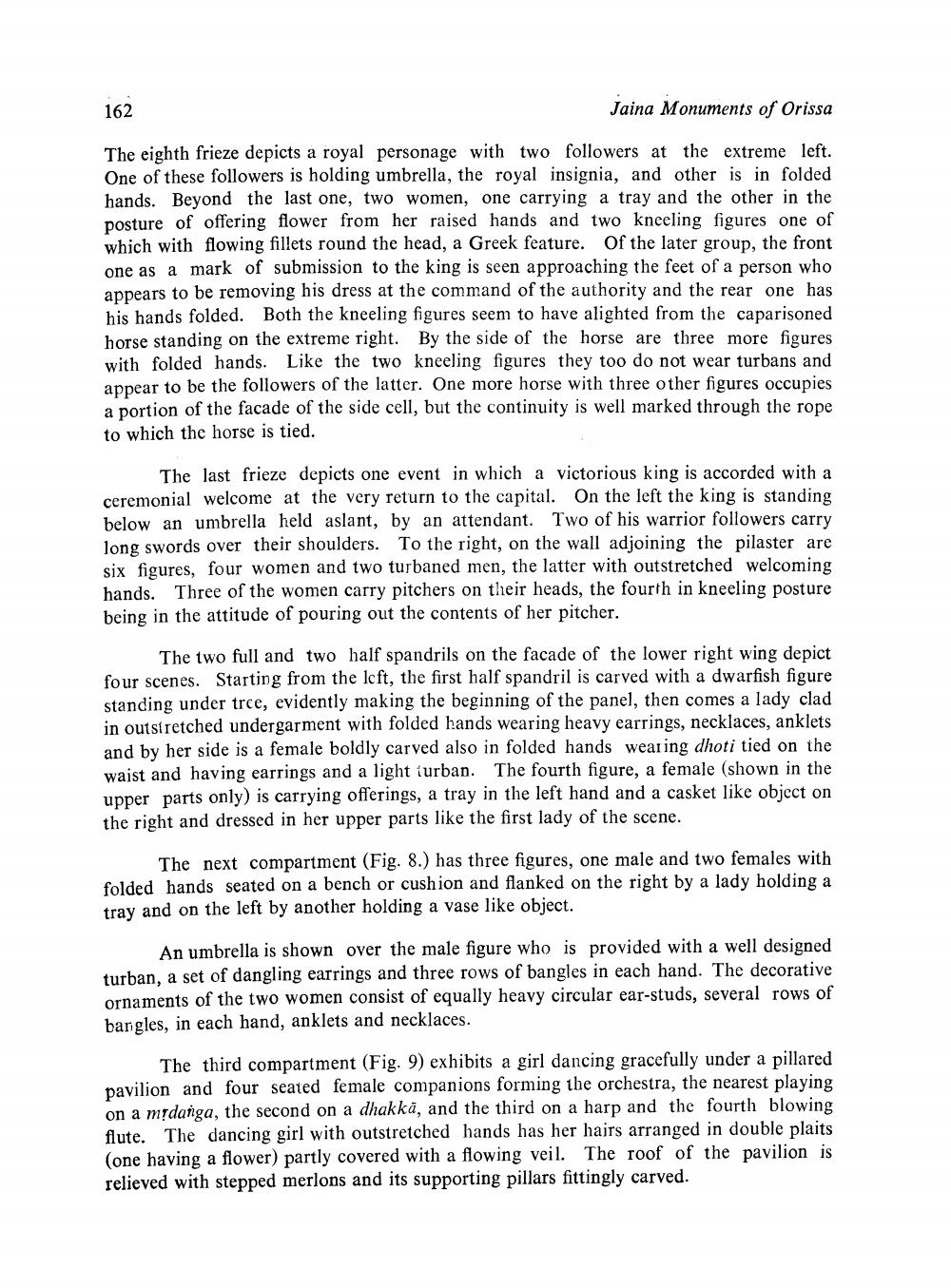________________
162
Jaina Monuments of Orissa
The eighth frieze depicts a royal personage with two followers at the extreme left. One of these followers is holding umbrella, the royal insignia, and other is in folded. hands. Beyond the last one, two women, one carrying a tray and the other in the posture of offering flower from her raised hands and two kneeling figures one of which with flowing fillets round the head, a Greek feature. Of the later group, the front one as a mark of submission to the king is seen approaching the feet of a person who appears to be removing his dress at the command of the authority and the rear one has his hands folded. Both the kneeling figures seem to have alighted from the caparisoned horse standing on the extreme right. By the side of the horse are three more figures with folded hands. Like the two kneeling figures they too do not wear turbans and appear to be the followers of the latter. One more horse with three other figures occupies a portion of the facade of the side cell, but the continuity is well marked through the rope to which the horse is tied.
The last frieze depicts one event in which a victorious king is accorded with a ceremonial welcome at the very return to the capital. On the left the king is standing below an umbrella held aslant, by an attendant. Two of his warrior followers carry long swords over their shoulders. To the right, on the wall adjoining the pilaster are six figures, four women and two turbaned men, the latter with outstretched welcoming. hands. Three of the women carry pitchers on their heads, the fourth in kneeling posture being in the attitude of pouring out the contents of her pitcher.
The two full and two half spandrils on the facade of the lower right wing depict four scenes. Starting from the left, the first half spandril is carved with a dwarfish figure standing under tree, evidently making the beginning of the panel, then comes a lady clad in outstretched undergarment with folded hands wearing heavy earrings, necklaces, anklets and by her side is a female boldly carved also in folded hands wearing dhoti tied on the waist and having earrings and a light turban. The fourth figure, a female (shown in the upper parts only) is carrying offerings, a tray in the left hand and a casket like object on the right and dressed in her upper parts like the first lady of the scene.
The next compartment (Fig. 8.) has three figures, one male and two females with folded hands seated on a bench or cushion and flanked on the right by a lady holding a tray and on the left by another holding a vase like object.
An umbrella is shown over the male figure who is provided with a well designed turban, a set of dangling earrings and three rows of bangles in each hand. The decorative ornaments of the two women consist of equally heavy circular ear-studs, several rows of bangles, in each hand, anklets and necklaces.
The third compartment (Fig. 9) exhibits a girl dancing gracefully under a pillared pavilion and four seated female companions forming the orchestra, the nearest playing on a mydanga, the second on a dhakka, and the third on a harp and the fourth blowing flute. The dancing girl with outstretched hands has her hairs arranged in double plaits (one having a flower) partly covered with a flowing veil. The roof of the pavilion is relieved with stepped merlons and its supporting pillars fittingly carved.




